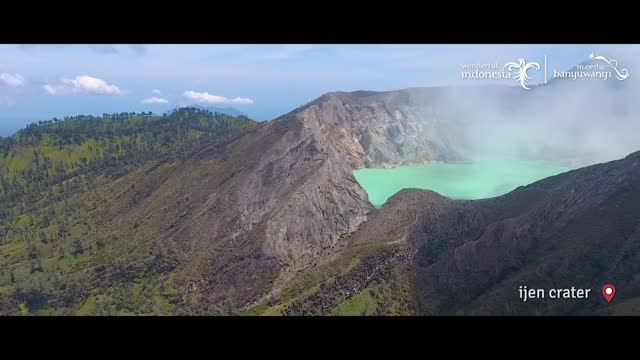Premium Only Content

Wanderful Indonesia : Banyuwangi - Jawa Timur (East Java), Indonesia
anyuwangi Regency is a regency (Indonesian: kabupaten) of East Java province in Indonesia. This regency also known as the sun rise of Java because it is located at the easternmost end of Java Island. It serves as a port between Java and Bali. It is surrounded by mountains and forests to the west; by sea to the east and south. Banyuwangi is separated by the Strait of Bali from Bali. With an area of 5,782.4 km2, this regency is the largest in Java. The regency is a tourist destination, and subject to ongoing development as an international tourist destination with relevant infrastructure.[2] Banyuwangi regency has been declared a taman bumi (earth park), or national geological park (Geopark) in 2018.[3]
It had a population of 1,488,791 according to the 2000 Census; by the 2010 Census it had risen to 1,556,078; and at the 2020 Census to 1,708,114.[4] The town of Banyuwangi is the administrative capital. The name Banyuwangi is Javanese for "fragrant water", connected to the Javanese folklore of Sri Tanjung.
One Banyuwangi native group is the Osing community which has a Hindu culture although they can be considered as a Javanese sub-ethnic group. They live mainly in the central part of Banyuwangi and they sometimes consider themselves as Majapahit descendants.[citation needed] Other groups are Javanese (living mostly in the south and west), Madurese (mainly in the north and coastal area) and Balinese (scattered but more concentrated in the east). Other smaller groups include Chinese, Buginese, and Arabs.
Once known as Blambangan (or its variation: Balambangan and Balumbungan), it was a vassal of the Majapahit Kingdom and a regional trade centre. After the Majapahit Kingdom ceased to exist, it became an independent kingdom and, as such, the last Hindu kingdom of Java. In order to defend itself from the troops of the Sultanate of Demak, which tried to occupy it, Blambangan asked for help from Balinese kings, which caused it to lose its independence to Balinese kingdoms. During this time Blambangan was deeply influenced by Balinese culture. After around 150 years of Balinese occupation, the Sultanate of Mataram gained control of the territory and renamed it Banyuwangi. Later, it was part of the Mataram territory controlled by the VOC (1770). During the expansion of plantations in the 19th century, many parts of Banyuwangi were planted with coffee and sugar cane, which feature its landscape even now. The Chinese and Arabs came mostly during this period.
Banyuwangi people are known for their combination of Islamic and pre-Islamic tradition.
Thank you for watching! If you enjoyed, please Subscribe us 😎😎😎
-
 19:55
19:55
The Rad Factory
16 hours ago $1.33 earnedCan I Fix My Fire Damaged F1 Car?
12.8K2 -
 1:26:22
1:26:22
Dialogue works
2 days ago $0.36 earnedScott Ritter: Russia Just DEFIED the U.S.: We'll End the War on OUR Terms!
3.35K10 -
 2:00:40
2:00:40
BEK TV
1 day agoTrent Loos in the Morning - 8/01/2025
13.5K1 -
 13:08
13:08
Dad Saves America
14 hours ago $1.53 earnedTeachers Unions Play Politics While Students Lag Behind - Poisoning of the American Mind: Pt 4
18K14 -
 20:05
20:05
Preston Stewart
14 hours ago $2.27 earnedCrimea Raid to Chasiv Yar Fight
20K9 -
 8:11
8:11
Millionaire Mentor
16 hours agoTulsi Gabbard and Leavitt DOUBLE-TEAM Kaitlan Collins in FIERY Exchange
16.1K7 -
 46:02
46:02
Coin Stories with Natalie Brunell
1 day agoWhat They’re Hiding About the Economy | Natalie Brunell with Danielle DiMartino Booth
49.4K14 -
 12:12
12:12
GritsGG
15 hours ago23 Warzone Wins in a Row! (Cypher AR)
90.1K3 -
 2:12:07
2:12:07
Side Scrollers Podcast
22 hours agoCULTURE SHIFT CAUSES MELTDOWNS + MASSIVE CENSORSHIP EFFORTS RAMP UP | SIDE SCROLLERS LIVE
31K12 -
 11:25
11:25
Nikko Ortiz
1 day agoMost Painful Fails
60.7K31